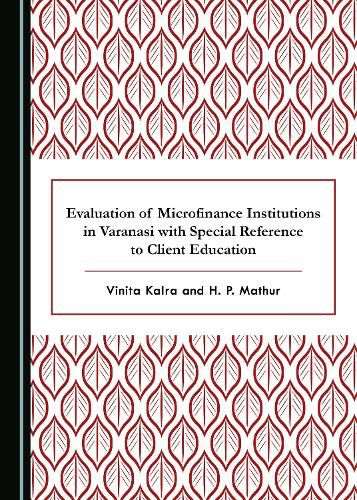Readings Newsletter
Become a Readings Member to make your shopping experience even easier.
Sign in or sign up for free!
You’re not far away from qualifying for FREE standard shipping within Australia
You’ve qualified for FREE standard shipping within Australia
The cart is loading…






In the last two decades, microfinance has gained growing recognition as an effective tool for improving the quality of life and the living standard of poor and low-income people. Microfinance’s popularity reached a peak when the United Nations declared 2005 the ‘International Year of Microcredit’ and when, one year later, the author of ‘Banker to the Poor’, Muhammad Yunus, was awarded the Nobel Peace Prize. This recognition has given rise to a movement that was supposed to accomplish social and financial goals simultaneously and without any friction.However, microfinance as an industry was shaken for the first time in 2008, as a consequence of the international financial crisis, and it again suffered problems more recently. It was reported that the populist moves by politicians led to a mass default of loans, of worth more than US$1.5 billion in the southern Indian state of Andhra Pradesh, the biggest market for the microfinance institutions in India. Measures taken to ensure that the 2008 crisis and its consequences are not repeated include bringing clients’ protection principles to work and building client awareness in order to make informed decisions. This book focuses on the efficacy of ‘financial education’ as a tool towards attaining client protection. It also utilizes the Microfinance Clients Awareness Index to evaluate the factors that impact the level of financial awareness for microfinance clients.
$9.00 standard shipping within Australia
FREE standard shipping within Australia for orders over $100.00
Express & International shipping calculated at checkout
In the last two decades, microfinance has gained growing recognition as an effective tool for improving the quality of life and the living standard of poor and low-income people. Microfinance’s popularity reached a peak when the United Nations declared 2005 the ‘International Year of Microcredit’ and when, one year later, the author of ‘Banker to the Poor’, Muhammad Yunus, was awarded the Nobel Peace Prize. This recognition has given rise to a movement that was supposed to accomplish social and financial goals simultaneously and without any friction.However, microfinance as an industry was shaken for the first time in 2008, as a consequence of the international financial crisis, and it again suffered problems more recently. It was reported that the populist moves by politicians led to a mass default of loans, of worth more than US$1.5 billion in the southern Indian state of Andhra Pradesh, the biggest market for the microfinance institutions in India. Measures taken to ensure that the 2008 crisis and its consequences are not repeated include bringing clients’ protection principles to work and building client awareness in order to make informed decisions. This book focuses on the efficacy of ‘financial education’ as a tool towards attaining client protection. It also utilizes the Microfinance Clients Awareness Index to evaluate the factors that impact the level of financial awareness for microfinance clients.